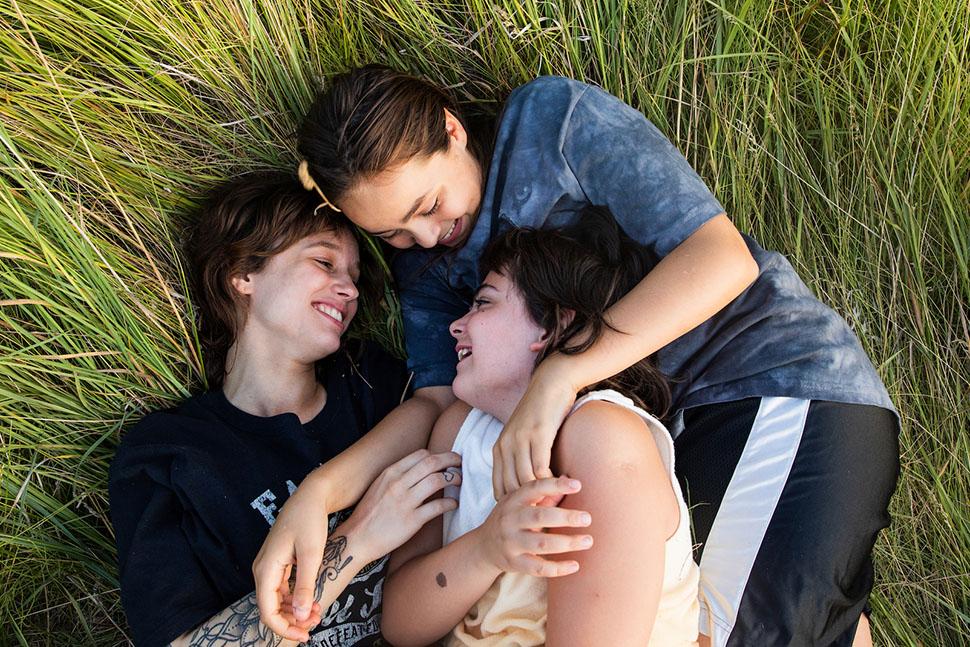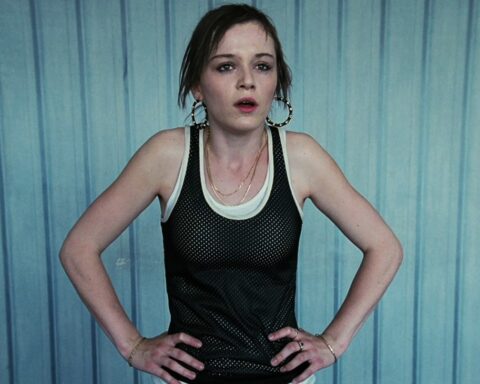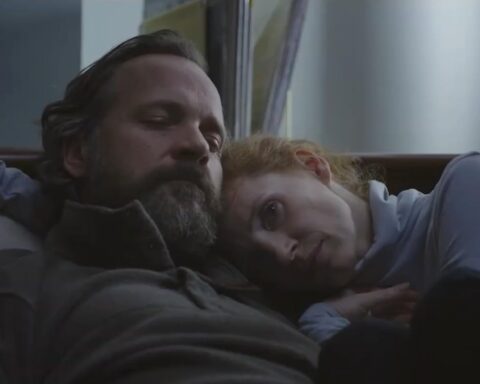Paradiset Brinner (2023)
Heaven May Burn, But Long Live Sisterhood
Swedish director Mika Gustafson’s first feature film, who had previously made a documentary, fills its audience with the feeling of sisterhood. Premiering at the Venice Film Festival, Paradiset Brinner earned Gustafson two awards, including Best Film in the Orizzonti section.
The film revolves around Laura, who is just 16 years old and lives alone with her two younger sisters aged 6 and 12. Being the eldest in the family, Laura took on the responsibility of her sisters on her own after their mother left them 8-9 months ago (not the first time she has done so). Though she is a free-spirited girl who doesn’t adhere to rules, she manages everything seemingly well except for a few small problems. The opening scene where we meet the sisters is quite similar to Paco Plaza’s film Veronica (2017). A common motif among older sisters who take on childcare responsibilities at a young age might be washing the bed-wetting sheets of their siblings and giving them rowdy baths.
The three sisters don’t live in misery, but it cannot be said that they lead normal lives either. They wake up whenever they want, eat what they want, and throw parties filled with dancing and fun with their friends by swimming pools of houses they sneak into or in meadows among the trees. Watching from the perspective of these three sisters throughout the film, we can easily say that adults are good for nothing but ruining paradise. Unfortunately, their paradise without adults is not secure enough. A call from a social worker becomes the first spark to disrupt it.
Laura’s struggle against the invisible monster of social services threatening her paradise forms the main storyline, while the experiences of her teenage sister Mira and the funny little troublemaker Steffi, who is like a “Little Miss Colin Farrell,” unfold in the form of anecdotal side stories. Although everything takes place within just a few weeks, the glimpses shown witness significant moments of growth not just for Laura, but also for her two sisters.
The three central sisters are accompanied by adults who have lost themselves even more than the children. In this sense, we can say that the most intriguing character is Hanna, who Laura first encounters during a grocery store pickpocketing and then starts committing small crimes with due to a chain of coincidences. Laura, who endures the hardships caused by their mysterious mother’s abandonment, forms an emotional bond with Hanna, who tries to escape her vanished life as a mother by committing small crimes. It is an ironic coincidence to encounter another escaping mother after the first.
While Gustafson and her long-term partner Alexander Öhrstrand aimed to create genderless characters while writing the screenplay, they deliberately chose to tell a story of sisterhood and the growth of girls. In this sense, we can say that the screenplay is rich in terms of characters, and the acting performances are very successful. As much as the characters and their portrayals, the attention to detail in the settings is also noteworthy. The height markings on the door, childhood and baby photos in frames, the lack of a single photo or item belonging to the mother or father anywhere, and occasionally torn wallpapers are examples. Furthermore, Gustafson and Öhrstrand combine the music they collected from their childhood with modern songs, such as Aventura–Obsesion, Amadou & Mariam–Sabali, Fever Ray–Keep the Streets Empty for Me, and many others from the past. Taking the audience back in time with music is always a good idea, and we can say it aligns well with the film.
After listing its successful elements, if we move on to the things that detract from the film, we can say that the narrative structure breaks down at times. Scenes that reach their peak suddenly fade away along with the music, transitioning to the next plan as if the scene had been abruptly cut short, which disrupts the film. The obvious reference to Tarkovsky’s dog, which had no relation to the film, was also unnecessary.
Finally, the film Scrapper (2023), with its skilled characters struggling with social services, and some scenes that bring to mind Andrea Arnold’s Wasp (2003), may be considered working-class social realism at times, but it can be likened to a highly sweetened version of realism. It is neither as real as Wasp nor as whimsical as Scrapper.
Beyond all these reminders, we can say that Paradiset Brinner is a film with its own unique special scenes, such as the celebration ritual of a child’s transition to womanhood, the adventures of little Steffi imitating her sisters, and Mira’s karaoke managing. Perhaps instead of comparing first feature films to others, like children, they should be accepted as they are.
by Zeynep Bakanoğlu







